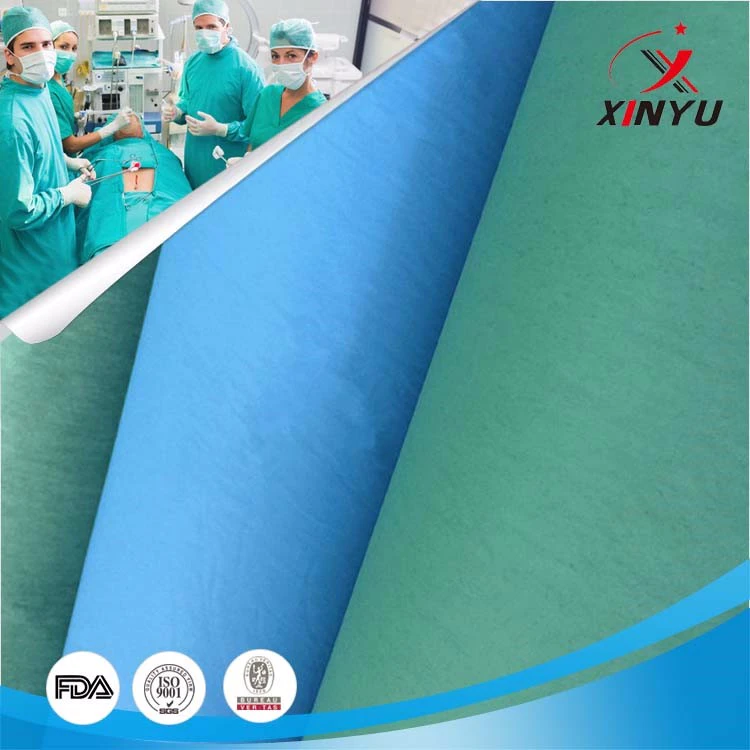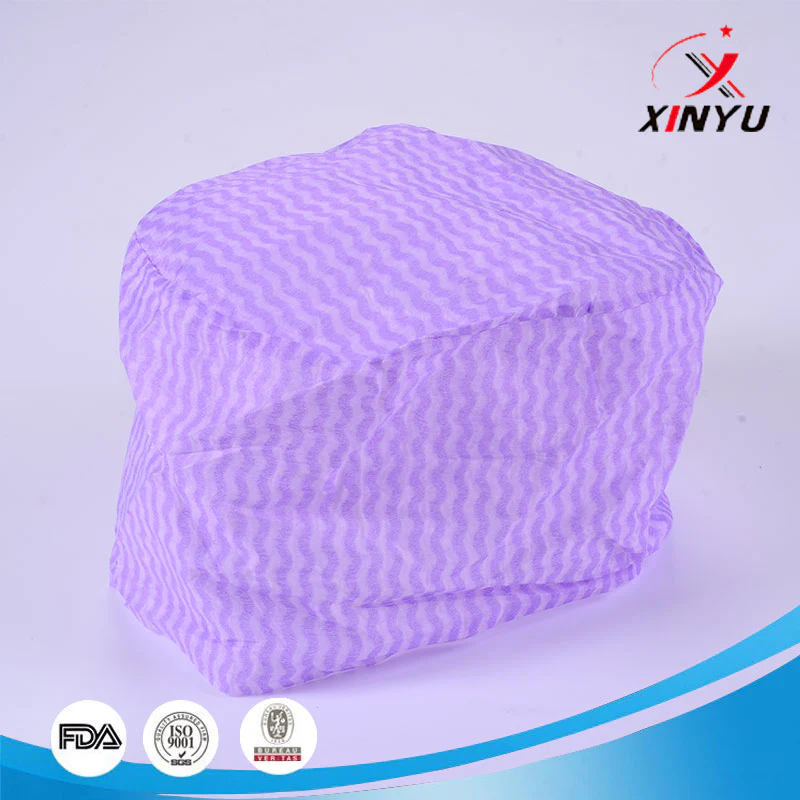What Medical Textiles have Applications of Nonwoven Fabric?
The history of nonwoven fabrics in the medical and healthcare fields dates back to World War II. During this period, there was an urgent need for innovative and high-capacity medical products. Research and reports from that era highlight the significance of nonwovens, particularly noting their superior effectiveness as bacterial barriers. These materials were also found to surpass traditional linens in reducing airborne contamination. The evolution of nonwovens has been significant; they have been specially engineered to meet medical requirements, outperforming woven materials in various aspects, including efficiency and durability.
In hospital environments, one of the primary concerns is the risk of cross-contamination, often linked to the reuse of woven gowns, masks, and similar items. These products, once contaminated, could facilitate the spread of germs.
Medical Textiles Applications of Nonwoven Fabric
When it comes to medical textiles, nonwoven fabrics have found numerous non woven applications. These include but are not limited to, items like surgical gowns, masks, and other disposables that are essential in maintaining hygiene and preventing contamination in medical settings. The disposable nature of nonwovens, combined with their effectiveness in barrier protection, makes them a critical component in medical textiles.
Surgical Gowns
Surgical gowns are a prevalent use of medical non-woven fabric in textiles. These gowns are essential during surgical procedures, providing a barrier against the splashing of bodily fluids such as blood, respiratory secretions, vomit, or feces. The design of disposable surgical gowns focuses on fluid-resistant materials to limit the transfer of bodily fluids. Their primary function is to shield healthcare professionals by offering a limited but effective barrier against microorganisms and minor fluid contact.
| Medical Textiles Applications - Surgical gowns | Medical Non woven Fabric For Isolation Non Woven Cap |
Surgical Masks
Surgical masks must fulfill specific criteria, including high air permeability, substantial filtration capacity, and a lightweight, non-irritating design. Typically, these masks are composed of a fine middle layer made of extra-fine glass fibers or synthetic microfibers. This layer is sandwiched between two layers of medical non-woven fabric, which can be either acrylic-bonded parallel-laid or wet-laid. These masks are a key example of nonwoven fabric usage in medical textiles, designed for safety and comfort.
Surgical Drapes and Cover Cloths
These products are specifically designed for covering patients or the working areas around them during medical procedures. The preferred material for these items is often loop-raised warp-knitted polyester fabric. This fabric is then laminated with PTFE films, giving it desirable characteristics such as air permeability, comfort, and resistance to microbial contamination. The combination of these properties makes these drapes and covers essential for maintaining sterile conditions in surgical environments.
Surgical Hosiery
Surgical hosiery encompasses a range of compression garments, each designed for specific therapeutic purposes. These garments, including knee and elbow caps, are often crafted through knitting techniques on circular machines and may incorporate elastomeric threads. They are primarily used for support and compression during physical activities or as protective gear.
Hospital Ward Textiles
This category includes textiles used for patient care and hygiene, such as bedding, bed covers, and incontinence products. Traditional woolen blankets in hospitals have been largely replaced with cotton leno woven blankets to lower the risk of contamination. These new blankets are made from soft spun, two-fold yarns that provide necessary thermal properties. In isolation wards and ICUs, disposable protective clothing is increasingly used to minimize cross-contamination. These garments are often made from a composite of tissue reinforced with PET (polyethylene terephthalate) or polypropylene spunlaid web.
Cleaning Products
The cleaning products category in medical settings features items like floor gauze, dry dusting systems, hard surface disinfectant wipes with high absorbency, window cloths, electrostatic disposable dusters, and various types of cleaning mops. These products are essential for maintaining hygiene and cleanliness in healthcare environments.
Bandages
Bandages are designed to serve a wide array of functions depending on medical needs. Their construction can be woven, knitted, nonwoven, or composite. Bandages are categorized based on their specific function, and each type is tailored to meet particular medical requirements. The use of nonwoven fabrics in bandages highlights their versatility and importance in non woven fabric in medical textiles.
Disposable Feminine Products
These products typically consist of three layers. The inner top layer is a blend of hydrophobic low-density fibers designed to be permeable to liquids and water. The core layer is composed of wood pulp and other absorbent materials, ensuring high absorbency. Lastly, the multi-layer barrier is designed to be permeable to water vapor but resistant to liquid water, providing effective protection.
Incontinence Products
Modern incontinence products also have a three-layer structure. The top layer, or cover stock, is permeable and spreads liquid laterally to reduce moisture concentration. The core is highly absorbent, efficiently soaking up fluids. The outermost layer is made of barrier materials like polyethylene or PVC films, which protect the patient’s clothing or bedding by keeping it dry.
Plaster
Plasters are comprised of three key components: the plaster fabric, adhesive, and wound pad. Traditionally, plasters were made using gauze impregnated with plaster of Paris. Nowadays, the plaster fabric is often made from spun bonded medical non-woven fabrics like cotton, viscose, polyester, or glass fiber. The adhesive used is typically acrylic-based to avoid sticking to the skin. The wound pad is generally a knitted viscose fabric imbued with an antiseptic. Its high absorbency is crucial for the quick absorption of secretions from the wound.
Surgical Gloves
Surgical gloves are an essential type of personal protective equipment used in medical settings and are one of the most common non woven applications. They serve to protect both the wearer and the patient from the transmission of microorganisms that could cause infection or illness during medical procedures and examinations. Medical gloves form a crucial part of an infection-control strategy. They are disposable and come in various types, including examination gloves, surgical gloves, and gloves for handling chemotherapy agents. These gloves are used by medical professionals when in contact with body fluids (like blood, respiratory secretions, vomit, urine, or feces), hazardous drugs, or potentially contaminated materials.
Bottom Line
Over 90% of US nonwoven fabric use comes from medical and hygiene. In emerging countries like Asia, Africa, and South America, medical non-woven fabric demand has increased. This increase is driven by factors such as the COVID-19 pandemic, rapid urbanization, a growing young population, and heightened health awareness. Looking ahead, the role and demand for non woven fabric in medical textiles are poised for considerable growth, underlining their critical place in medical textiles. If you’re looking for reliable non-woven medical textile producers, Wenzhou Xinyu is here for you. To know more about our expertise, visit our website here.


Office Add: Shatou Industrial Area, Linjiang,
Tengqiao Town, Lucheng District, Wenzhou City,
Zhejiang Province, China.
Contact Us
Contact Person: Angle
Tel: +86-577-56976991
E-mail: xya@wzxinyu.com
Skype / Wechat: +86-13780146870
Contact Person: Suzie
Tel: +86-577-56976979
E-mail: xy03@wzxinyu.co






